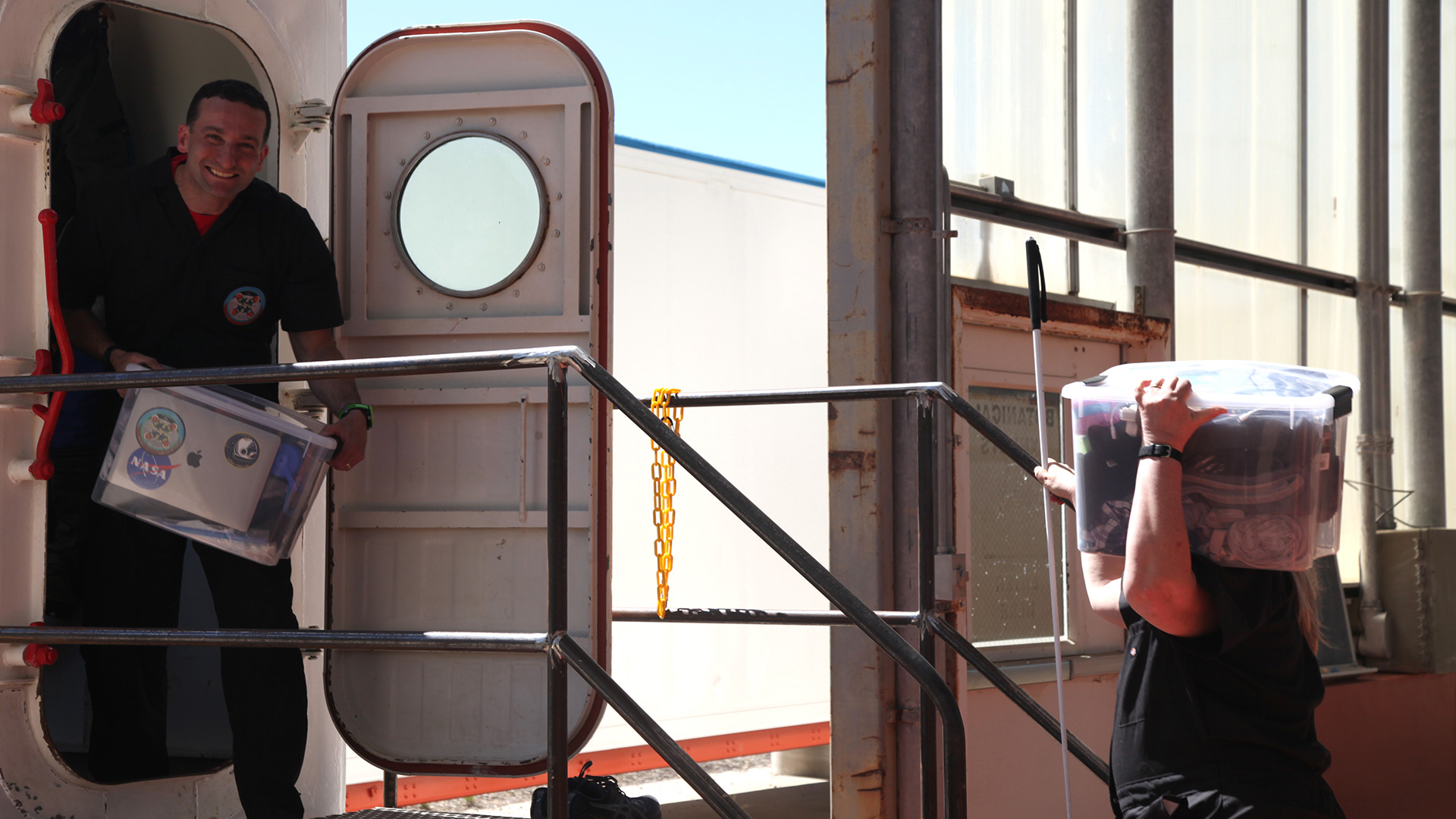 Mission medical officer Eiman Jahangir enters the Space Analog for the Moon and Mars as mission communications officer and accessibility officer Sheri Wells-Jensen walks up to the habitat at Biosphere 2 in north Tucson on Thursday, April 27, 2023. Jahangir is a two-time NASA astronaut candidate finalist.
Mission medical officer Eiman Jahangir enters the Space Analog for the Moon and Mars as mission communications officer and accessibility officer Sheri Wells-Jensen walks up to the habitat at Biosphere 2 in north Tucson on Thursday, April 27, 2023. Jahangir is a two-time NASA astronaut candidate finalist.
A new adventure is beginning at Biosphere 2 north of Tucson. A four-person crew sealed themselves into an air-tight, pressurized habitat Thursday morning to learn more about what life might be like on another planet.
The crew members will spend the six-day journey researching different science objectives ranging from the social aspects of human space colonization to their physical and emotional wellbeing.
Director of Research for the Space Analog for the Moon and Mars Kai Staats first brought the idea to Biosphere 2 years ago.
“When we look at living on other planetary bodies, the moon, Mars and beyond, we're really looking at how we should be living on Earth today,” Staats said. “Aware of every breath we take, aware of every ounce of water that we consume, aware of our diets.”
This will be the first time in 30 years that a group of researchers will be sealing themselves in an analogue habitat at Biosphere 2. The first mission enclosed eight Biospherians inside the glass building for two years to measure survivability.
 Crew members Eiman Jahangir (left), Sheri Wells-Jensen, Bailey Burns and Cassandra Klos (right) wave and laugh as they seal themselves into the analog for six days at Biosphere 2 in north Tucson on Thursday, April 27, 2023. For the next week, each member will conduct their own research project while testing the success of the analog.
Crew members Eiman Jahangir (left), Sheri Wells-Jensen, Bailey Burns and Cassandra Klos (right) wave and laugh as they seal themselves into the analog for six days at Biosphere 2 in north Tucson on Thursday, April 27, 2023. For the next week, each member will conduct their own research project while testing the success of the analog.
“The fact that it was originally used for a closed system experiment with humans in the loop,” Biosphere 2 Deputy Director and Chief Operations Officer John Adams said. “SAM is a perfect segue to leverage what was done historically and to build on that.”
This exploration combines technology from the first mission, like a prototype greenhouse, and reconstructs it to meet this mission’s needs.
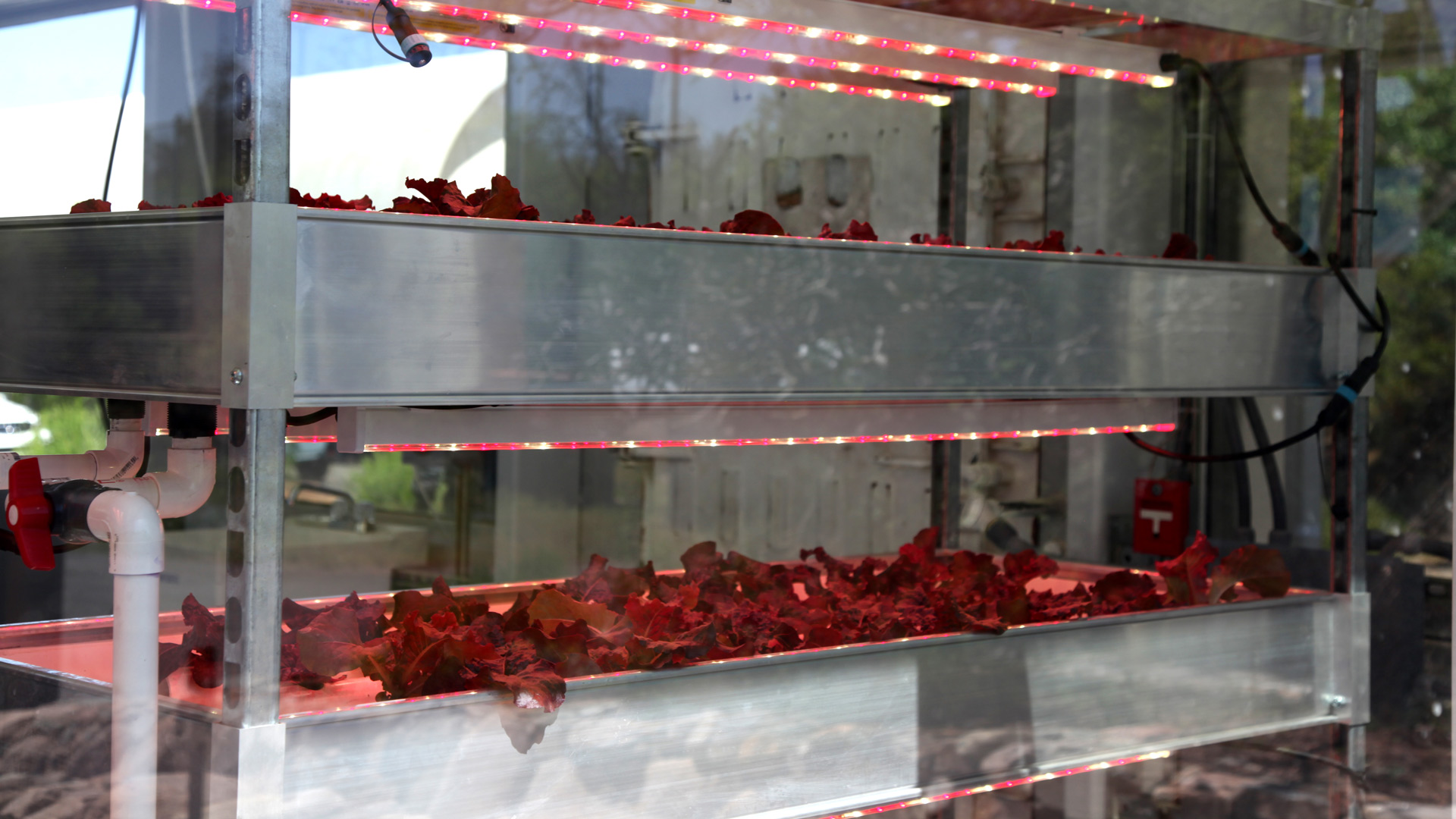 The Space Analog for the Moon and Mars utilizes a prototype greenhouse from the original Biosphere 2 in north Tucson on April 27, 2023. The greenhouse includes hydroponic growing environments and will be used to help provide clean air for the crew.
The Space Analog for the Moon and Mars utilizes a prototype greenhouse from the original Biosphere 2 in north Tucson on April 27, 2023. The greenhouse includes hydroponic growing environments and will be used to help provide clean air for the crew.
These types of simulations are not new, however what makes this journey different is that the habitat is sealed and pressurized–something that not even NASA has been able to do.
“Why do we need a pressurized analog? If we go to the moon, there is no atmosphere, you can't open the window or you die,” Staats said. “You have to completely contain the humans and their breathable atmosphere inside of a pressure vessel.”
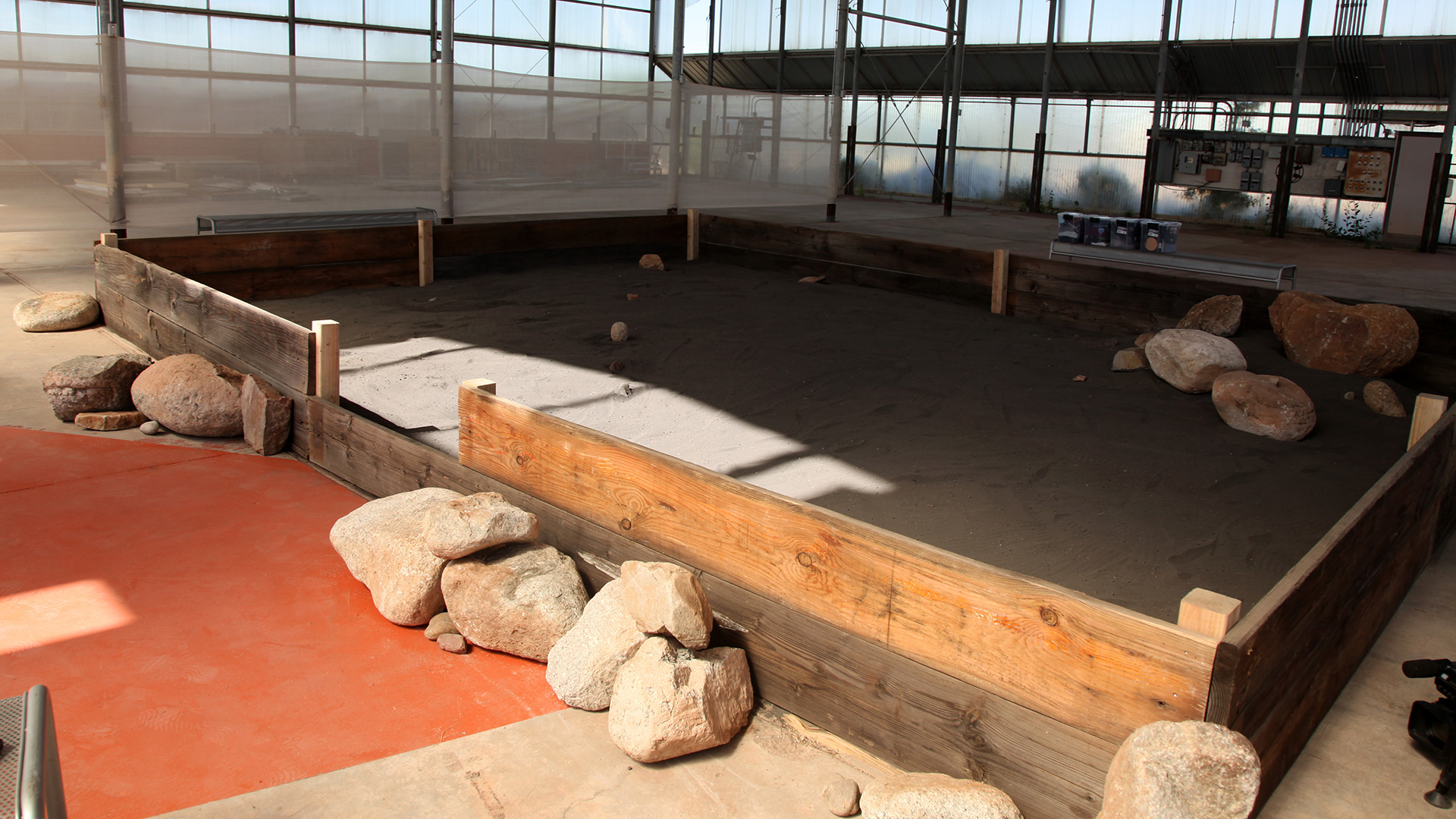 A half-acre Mars yard sits right in front of the pressurized habitat at Biosphere 2 in north Tucson on Thursday, April 27, 2023. The crew will test pressure suits, rovers and drones on the terrain that mimics the moon and Mars.
A half-acre Mars yard sits right in front of the pressurized habitat at Biosphere 2 in north Tucson on Thursday, April 27, 2023. The crew will test pressure suits, rovers and drones on the terrain that mimics the moon and Mars.
The 1,200 square foot habitat is equipped with a Mars yard that will be used for extravehicular activities, greenhouse, workshop, kitchen, common area and sleeping quarters. For Crew Commander Cassandra Klos, this will be her fourth analog, but she expects to still learn from this new mission.
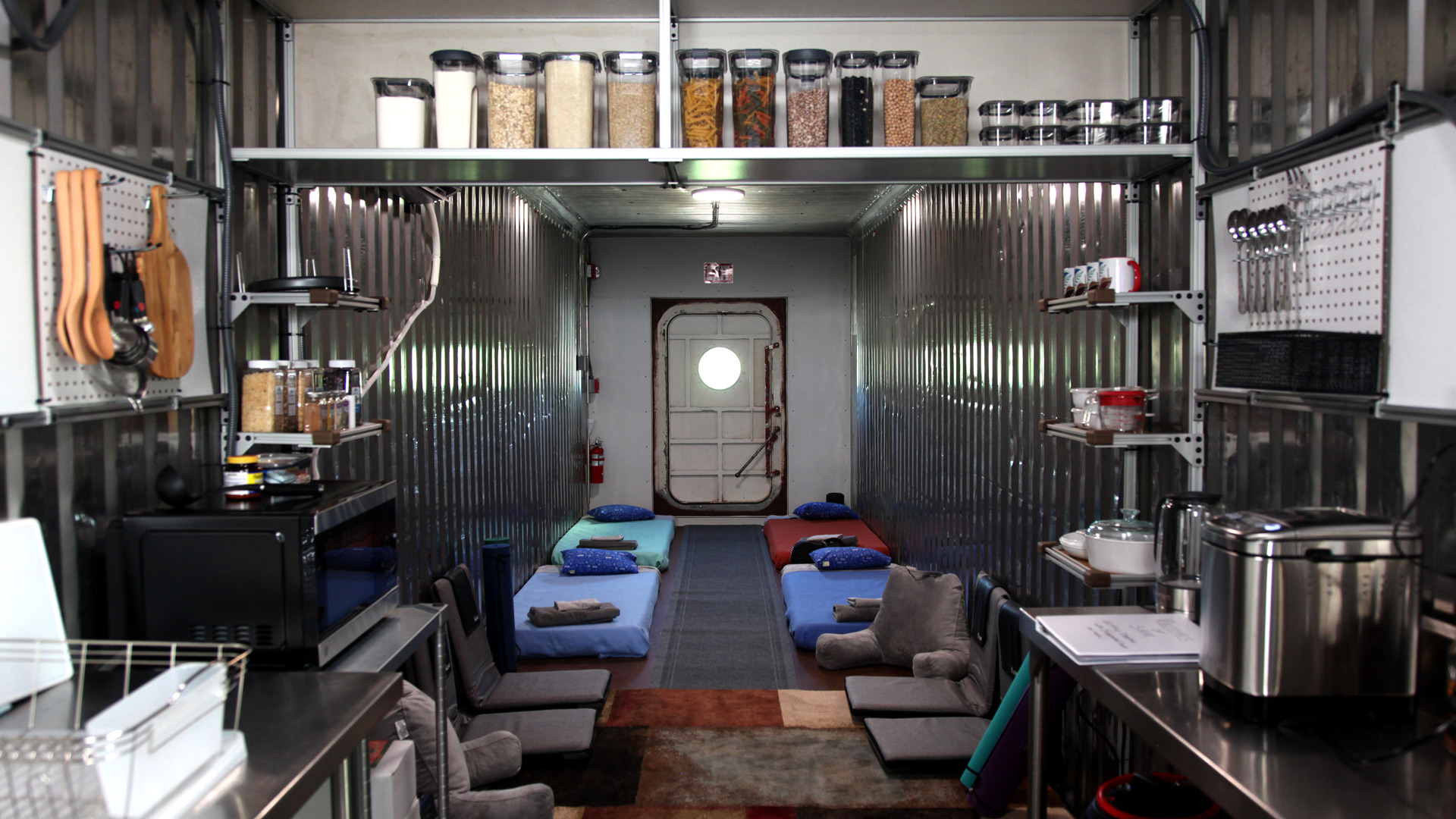 Four beds sit on the floor in the living quarters area of the Space Analog for the Moon and Mars at Biosphere 2 in north Tucson on Thursday, April 27, 2023. The crew will maintain a vegetarian diet for the week-long mission.
Four beds sit on the floor in the living quarters area of the Space Analog for the Moon and Mars at Biosphere 2 in north Tucson on Thursday, April 27, 2023. The crew will maintain a vegetarian diet for the week-long mission.
“Like astronauts who go to the International Space Station or go into space, they have this overview effect, we're going to have a different kind of overview effect where our life will change a little bit,” Klos said. “You never come out the same person that you went in.”
The crew will exit the habitat next Tuesday.
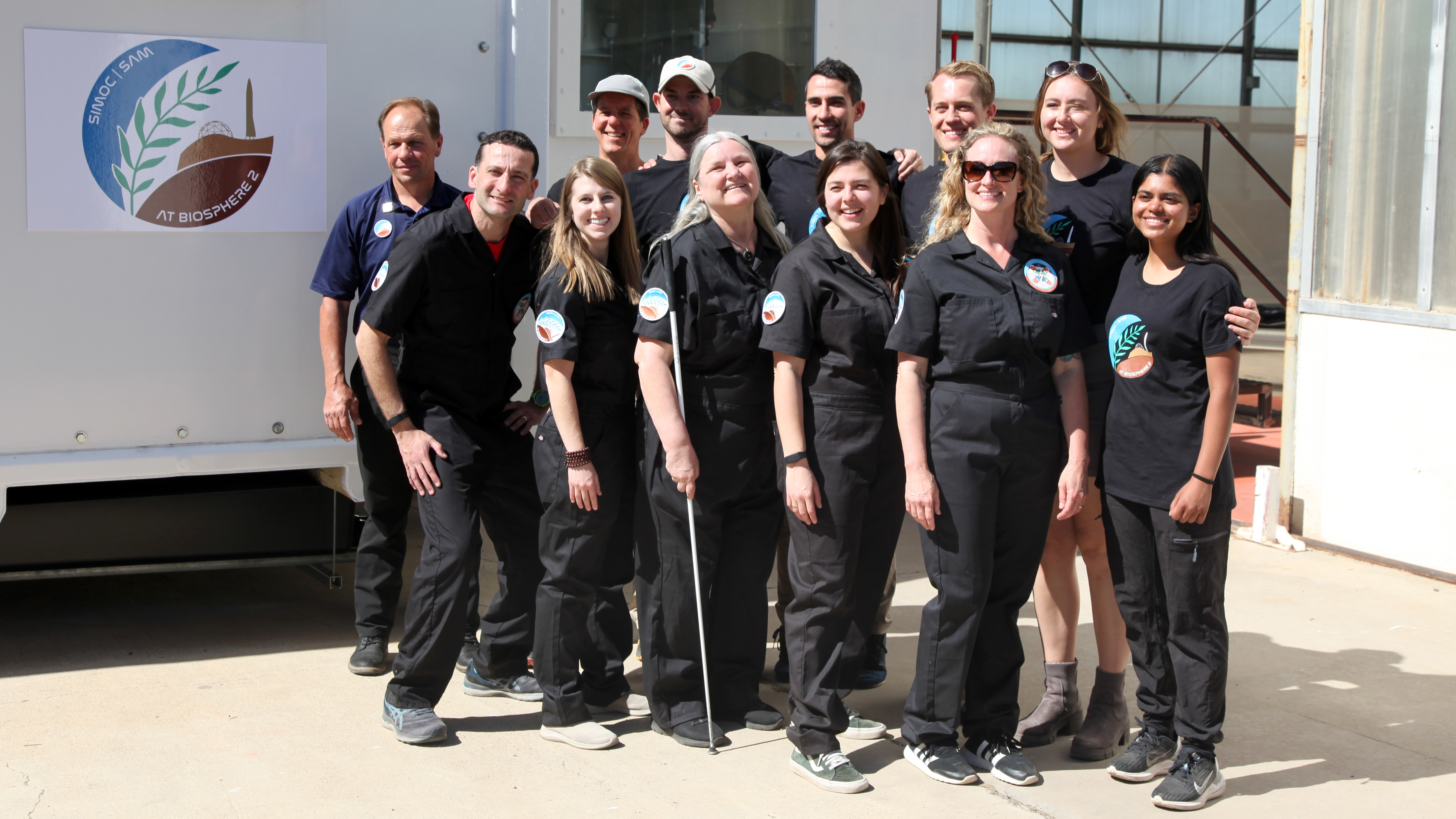 Everyone who has helped implement the Space Analog for the Moon and Mars stand in front of the habitat at Biosphere 2 in north Tucson on Thursday, April 27, 2023.
Everyone who has helped implement the Space Analog for the Moon and Mars stand in front of the habitat at Biosphere 2 in north Tucson on Thursday, April 27, 2023.

By submitting your comments, you hereby give AZPM the right to post your comments and potentially use them in any other form of media operated by this institution.